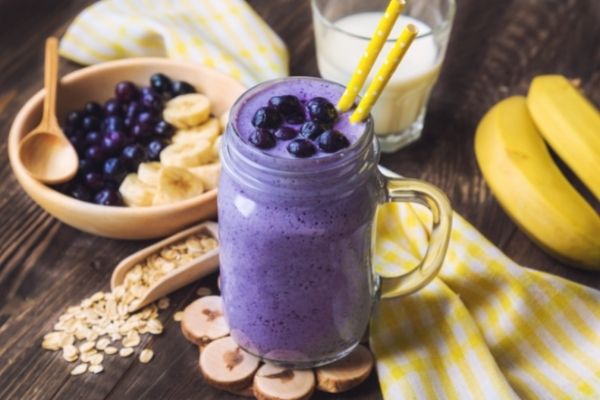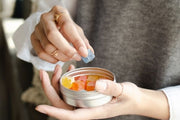How Can I Incorporate CBD into My Cooking?

First of All, What Is CBD?
The plant Cannabis Sativa contains over 80 biologically active chemicals called cannabinoids. The two most studied cannabinoids are tetrahydrocannabinol (THC) and cannabidiol (CBD). CBD is the main non-psychoactive cannabinoid and is considered safe at high doses. Plus, it does not have the intoxicating psychological side effects of THC. Both compounds interact with the body’s endocannabinoid system (ECS).
Endocannabinoids are created naturally within the human body, and their receptors are found throughout many organs. They regulate many biological processes such as sleep, appetite, mood, memory, and immune function. The ECS plays an essential role in maintaining homeostasis; basically, its job is to monitor the body’s internal conditions continuously, keeping it in a state of balance.
This system is made up of receptors (known as CB1 and CB2 receptors) found throughout the human body, in the organs, brain connective tissue, glands, and immune cells.
CBD is extracted from the cannabis plant but can also be made synthetically. We use it primarily to treat conditions such as epiliptic seizures, pain, anxiety, depression, and insomnia as well as the debilitating side effects of cancer treatment.
Cooking With CBD
Cooking with CBD is one of the easiest ways to introduce the compound into your daily health routine. Make sure you read the instructions on the label of your CBD product, considering the dosage for each portion. Follow these tips to get started.

Add CBD to Oils and Fats
CBD is lipid-soluble, which means it’s easy to add to most recipes when combined with healthy fats, such as olive oil, coconut oil, coconut butter, grass fed butter, or ghee.
Tip: Add CBD to your favorite cooking oil, such as olive oil or coconut oil, and drizzle over your meals. It is especially good on salads. Whisk, stir, shake, and drizzle! Adding garlic or chili peppers will add a warming effect. Just make sure you shake well before using, so the CBD is evenly distributed.
Mix CBD into Your Favorite Dishes
You can add CBD to virtually any meal, even if it isn’t high in fat. However, anything without high-fat content will involve more whisking to get the CBD to distribute more evenly.
Here are a few examples of meals you can use to sneak some CBD into your diet:
- Scrambled eggs
- Salad dressings
- Pasta sauces
- Marinades
- Guacamole
- Mashed potatoes
- Soups
CBD-Infused Dressing Recipe for Balsamic Vinaigrette
Although this makes a great simple salad dressing, it is equally delicious as a marinade for meat or drizzled over steamed vegetables.

Ingredients
- ¾ cup extra virgin olive oil
- ¾ cup balsamic vinegar
- 1 clove garlic, crushed
- ½ tsp. dried oregano
- 2 tsp. Dijon mustard
- Salt and pepper to taste
- 30mg CBD (experiment with amount)
Method
In a mason jar or other container with a tight lid, combine all the ingredients. Shake until all ingredients are combined.
Adding CBD to Sweet Treats
You can also use CBD in confections and baking. Here are some of the most common sweet treats people are adding CBD to:
- Chocolates
- Cakes
- Brownies
- Cookies
- Candy
- Gummies
- Energy protein balls

CBD Bliss Balls Recipe
Ingredients
- 2 cups almonds
- 2 tbsp. raw cacao powder
- 16 Medjool dates pitted and chopped
- 1 tbsp. natural vanilla essence
- 1 tbsp. coconut oil
- 30mg CBD (experiment with amount)
- ¼ cup mix of sunflower and pumpkin seeds
Method
Process nuts and cacao powder in a high-speed blender or food processor until crumbly. Add vanilla, dates, CBD and mix. Form into balls and roll in the seeds.
Add CBD to Your Morning Smoothie or Tumeric Latte
Why not start the day with a simple breakfast smoothie? CBD and a tablespoon of coconut oil, avocado, greek yogurt, or coconut milk, plus fresh berries will give an anti-inflammatory boost to your day.

CBD Smoothie Recipe
Ingredients
- 1 cup almond/coconut milk
- 1 frozen banana
- ½ cup blueberries
- 1 tbsp. almond butter
- 30mg CBD (experiment with amount)
Method
Blend all ingredients on high speed for 30 seconds

Turmeric Milk Recipe
Ingredients
- 1 cup almond coconut milk
- ½ tsp. organic ground or grated fresh turmeric
- Pinch of organic ground cinnamon
- Pinch of black pepper
- ½ tsp. natural vanilla essence
- 1 tsp. coconut oil
- 1 tsp. raw honey
- 30mg CBD (experiment with amount)
Method
- Put all the ingredients in a blender, blend until frothy
- Pour into a saucepan over low heat, gently stir, and bring to boil
- Allow it to cool a little before serving
- Alternatively, whisk all the ingredients in the saucepan over low heat, gently bringing to a boil
Tips For Using CBD in Food
Adding CBD to your food is simple, but there are some important points to remember if you want to get the most out of your CBD.
Watch the Temperature
Cannabinoids are sensitive to light and heat, so be mindful of cooking at low temperatures. Although warming CBD increases its effectiveness, heating it to high temperatures (above 365 degrees Fahrenheit or 185 degrees Celsius) causes it to lose valuable terpenes, which are diverse organic compounds that work in tandem with the CBD to increase its therapeutic effects. Adding too much heat can cause the CBD to break down into smaller less potent compounds.
Pay Attention to the Dose
If you’re a first time user of CBD, it’s essential to start with a low dose in your recipes until you know how your body responds to it. Perhaps you can start cooking in smaller batches using conservative amounts of CBD until you find what works for you. This will also avoid wasting your CBD. You can always increase the amount you add over time as you find your optimal dose.
As you get used to using CBD in your recipes, you will get an idea of what works for you and your taste preferences.
Always consider the potency of the product you’re using before adding it to your food. The potency of a teaspoon of low-strength (10mg/mL) oil will be very different from a teaspoon of a high potency oil (33.3mg/mL). For example, a high-strength dose will require 15mL of a low potency oil, but only 5mL of a high-potency oil.
Taking doses into account, you can determine how much CBD you should be adding to your food. If you’re making a large batch of something, such as cookies, you can calculate the number of servings and add enough CBD to be divided into each serving. For example, if you’re baking enough cookies for eight people, you should add eight doses of CBD at the desired strength.
When you are just starting out it is always advisable to speak to the company where you made your purchase. They can guide you as to dosage when incorporating CBD into your meals.
Store Your CBD Correctly
As CBD is sensitive to light, storing your CBD in a dark, cool space will ensure it keeps its taste and quality. It will also reduce waste due to spoilage.
Benefits of CBD and a List of Foods to Make it Even Better
Adding CBD to your cooking is an excellent way to incorporate its healing properties into your daily routine. CBD has been used for centuries for its calming and pain-relieving properties, with excellent benefits for many common ailments.

CBD for Insomnia and Nightmares
Sleep is essential to maintaining both physical and mental health. For many years people have found that using CBD as a sedative has improved the quantity and quality of their sleep.
Clinical trials have shown that people with post traumatic stress disorder (PTSD) sleep better and have significantly reduced flashbacks and nightmares after using CBD.
Certain foods can help you fall asleep faster and awake less often during the night. In addition to CBD, experiment with foods that contain nutrients such as tryptophan, melatonin, and serotonin that aid in prolonging a good night sleep.
Foods that are useful for insomnia include:
- Turkey
- Almonds and other nuts
- Milk and cottage cheese
- Avocado
- Kiwi fruit
CBD for Anxiety and Depression
The simple act of taking CBD with your favorite food one hour after exposure to a stressful event can have long-lasting and calming effects, reducing any increase in your heart rate and blood pressure.
These effects are what makes CBD oil so useful for conditions like anxiety, depression, OCD, and other mood disorders.
In a recent large case study, researchers found CBD reduced anxiety scores in patients and continued to provide relief with minimal side effects.The study used only small doses, between 25mg/ day to 175mg/day, which is an easily achievable addition to your daily routine and diet.
Foods that are high in omega-3 fatty acids can help ease symptoms.

Foods that can help relieve anxiety and depression include:
- Fatty fish such as salmon, mackerel, sardines
- Eggs
- Pumpkin seeds
- Blueberries
- Asparagus
- Probiotic foods such as yogurt, sauerkraut, kombucha, miso
CBD for Pain and Inflammation
Cannabinoids are potent anti-inflammatory agents. CBD has long been used as a natural analgesic to treat chronic pain and inflammation, offering a non-habit forming alternative to pain medications without their negative side effects.
One of the most potent tools for fighting inflammation comes from food. An anti-inflammatory diet consisting of healthy fats such as olive oil, fruits such as berries, green leafy vegetables and oily fish can help fight inflammation and joint pain.
Foods that help relieve pain and inflammation include:
- Fatty Fish such as salmon, mackerel, sardines
- Almonds and Walnuts
- Olive Oil
- Tomatoes
- Green Leaf Vegetables
- Berries such as strawberries and blueberries

CBD for Side Effects of Cancer Treatment
CBD can help relieve pain in patients with advanced-stage cancer where opioids have not proven effective. Studies have shown CBD offers relief of neuropathic pain, a common side effect caused by chemotherapy drug treatment.
CBD has a long history of use as a treatment to relieve cancer-related nausea and vomiting and increase appetite. Cancer patients often add CBD to snack foods and meals to help ease the debilitating side-effects of cancer treatment. As we have discussed, CBD can be added to many different foods.
Popular food and drinks cancer patients add CBD to include:
- Brownies
- Gummies
- Candies
- Chocolate
- Soup
- Infused in oil for cooking
- Water, juice, tea, or smoothies
Is CBD Safe?
You can’t overdose when adding CBD to your food. The World Health Organization (WHO) states that in its pure state, CBD does not cause harm or have the potential for abuse even at the highest doses.
As everyone processes CBD differently, your dose will vary from that of your family and friends. Whether supplementing alone or using in cooking, we recommend starting with a smaller dose, such as 25mg/30mg per day, and see how you react. You can gradually increase it by 5mg to 10mg. Stay at a dose for a few days to see how you react to it before moving up in dosage.
Recent studies have looked at very high doses of 750mg or 1500mg twice a day, and if consistently taken with food these high doses can maximize treatment outcomes in a host of conditions. However, you don’t need high doses to reap the benefits of CBD.
Of course, if you are going to add CBD to your food, you need to ensure you are using a high-grade high quality product.
Final Thoughts: Cooking with CBD
CBD is effective in relieving insomnia, anxiety, depression, pain and inflammation, as well as improving the many side effects that can occur during cancer treatment. As you become more familiar with using CBD, you may find yourself incorporating this powerful natural supplement to many of your favorite healthy recipes. More importantly, have fun and experiment with your cooking.



